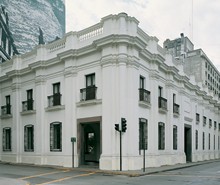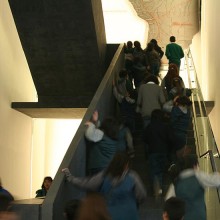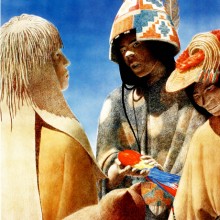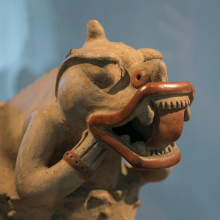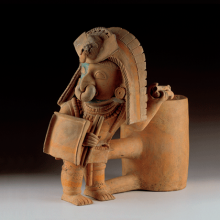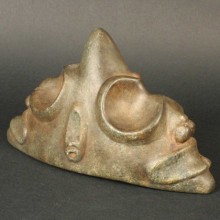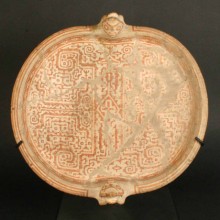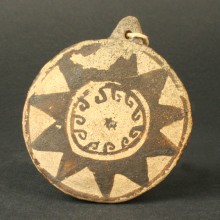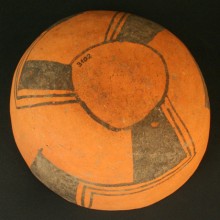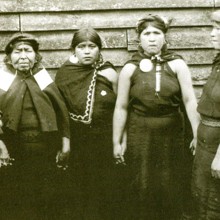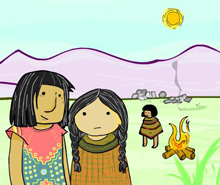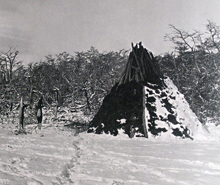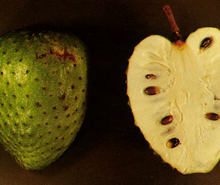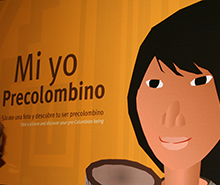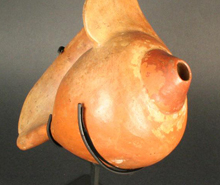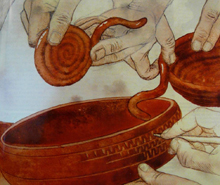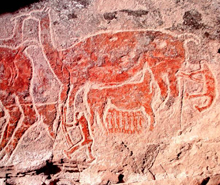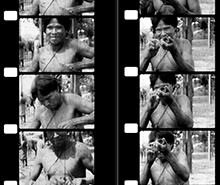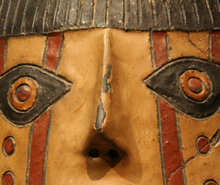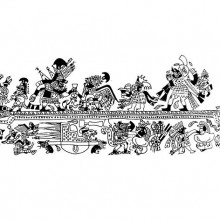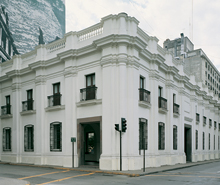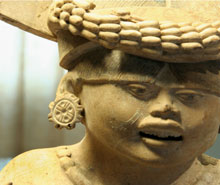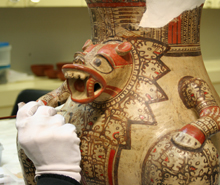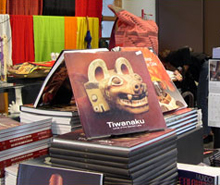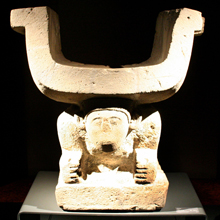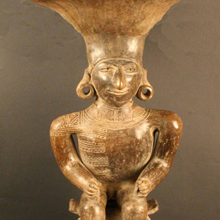The Manta culture arose on the coast of Ecuador north of the Gulf of Guayaquil, from the 5th century up to the arrival of the Spaniards. They were farmers, living in a privileged environment with access to ocean and forest resources. Their way of life allowed them to undertake major public agricultural and religious works that were organized by authoritative political leaders. European chroniclers described the inhabitants of this region as feared and respected people. Their chiefs were accompanied by a large cortege of trumpeters and drummers.
The stone seats have intrigued scholars for years, especially because most of them are located in a single place. Nevertheless, given the Manta social hierarchy, possibly the exercise of political power was involved. There is an Andean tradition that relates the action of sitting with a gesture of authority. The gods and political leaders of the Peruvian Inca maintained the balance of the social and natural universe by resting. They had to remain seated and motionless, but there was always the risk that would get up and destroy the universe.




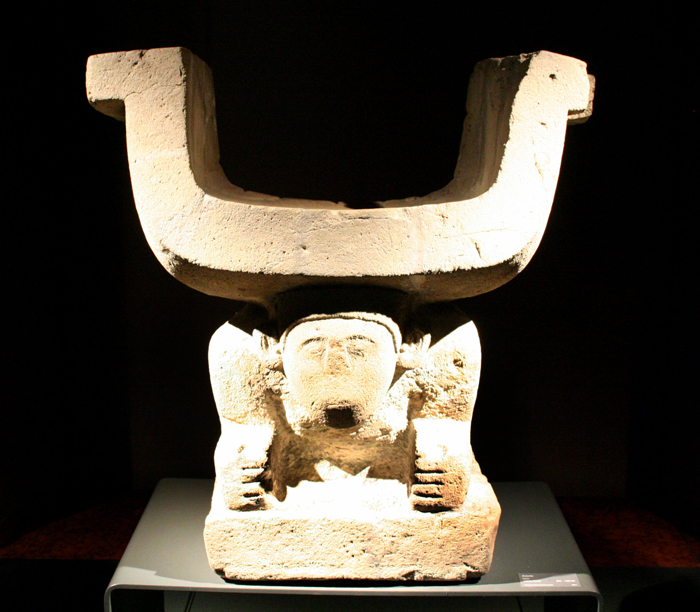
Materials: Stone
Integración 800 - 1500 dC
Measures: 688 mm de alto x 645 mm de largo x 390 mm de ancho
Part Code: MCHAP 2874
See the profile of this piece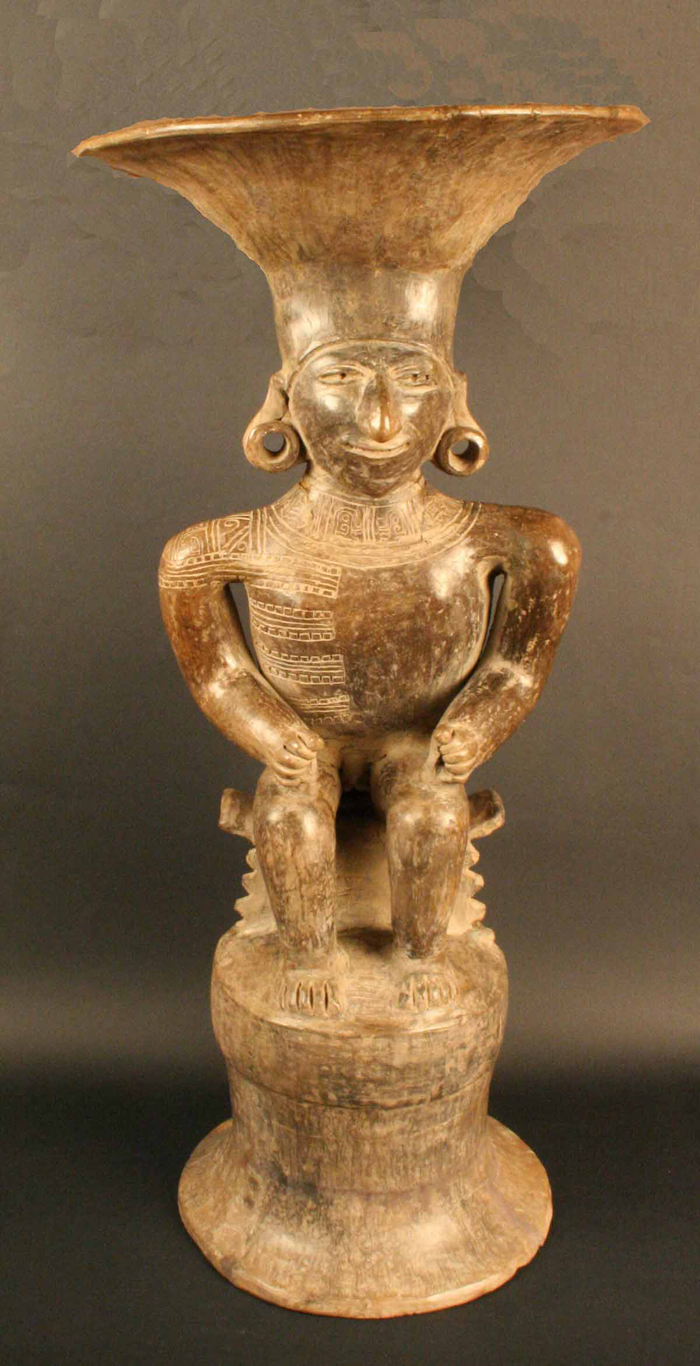
Materials: Ceramic
Integración 800 - 1500 dC
Measures: 680 mm de alto x 325 mm ancho
Part Code: MCHAP 0407
See the profile of this piece